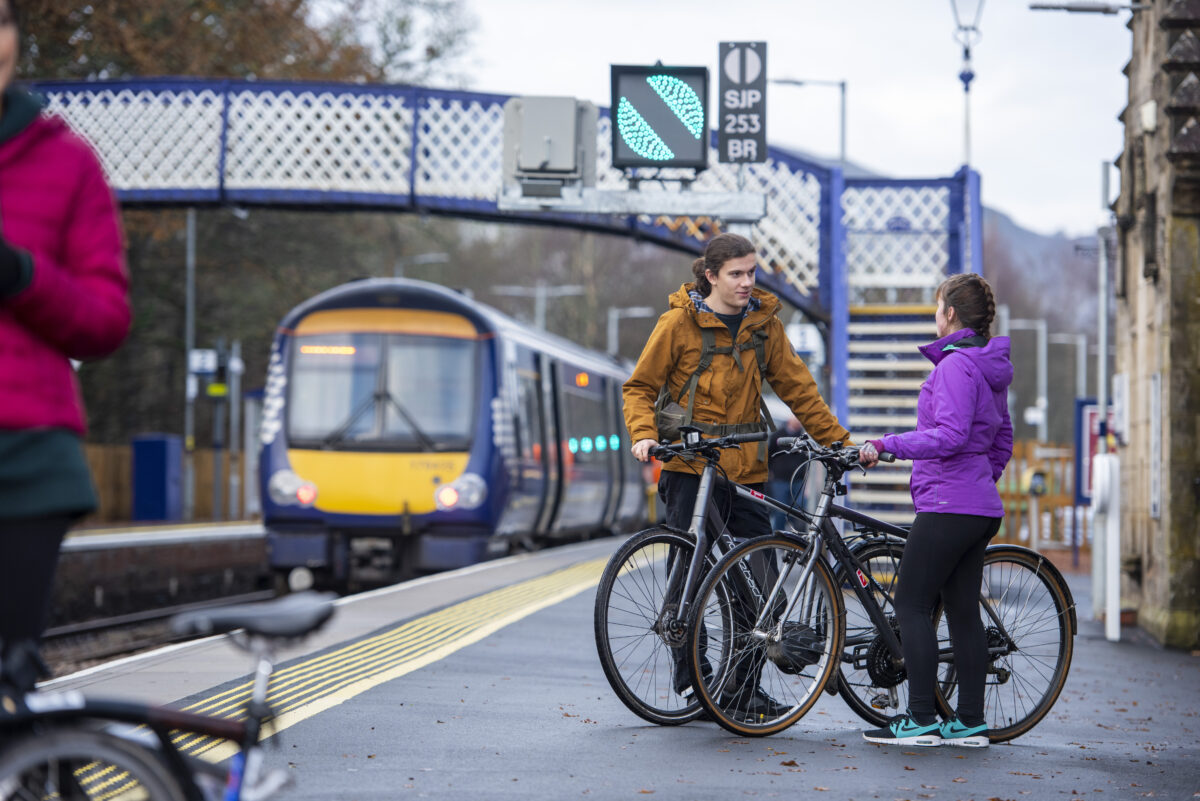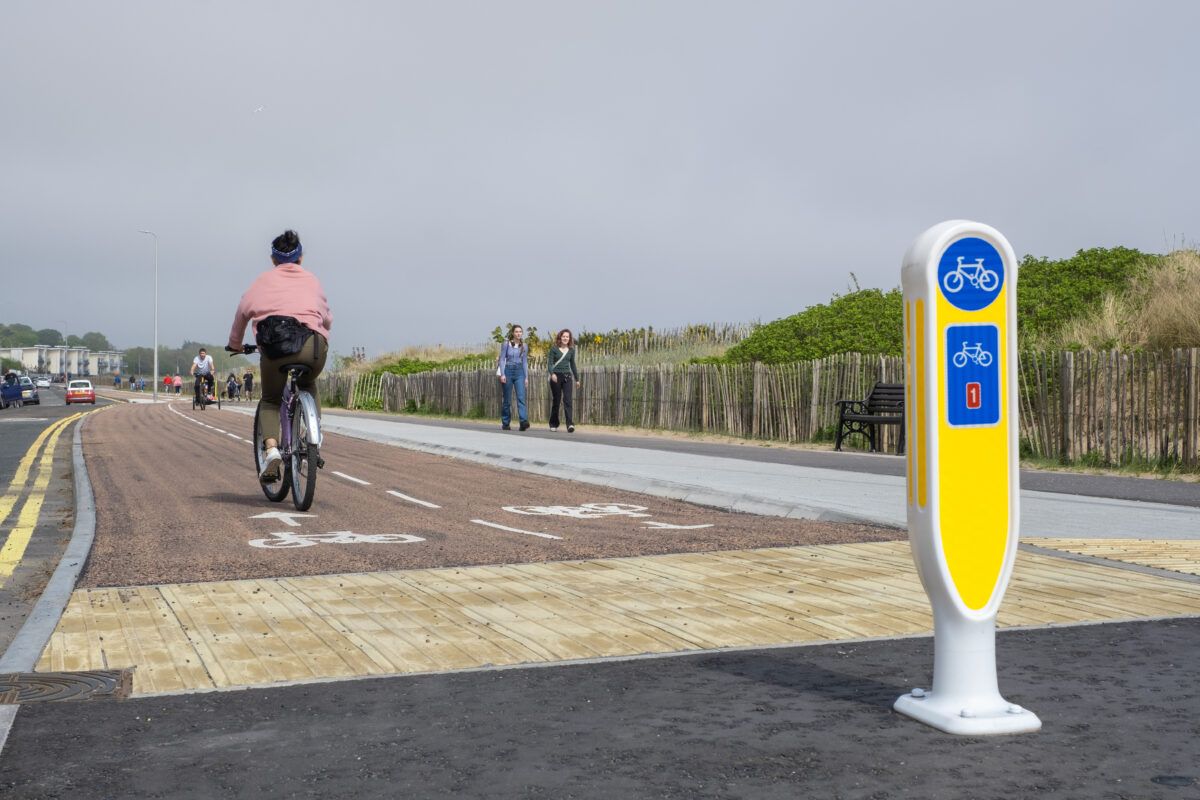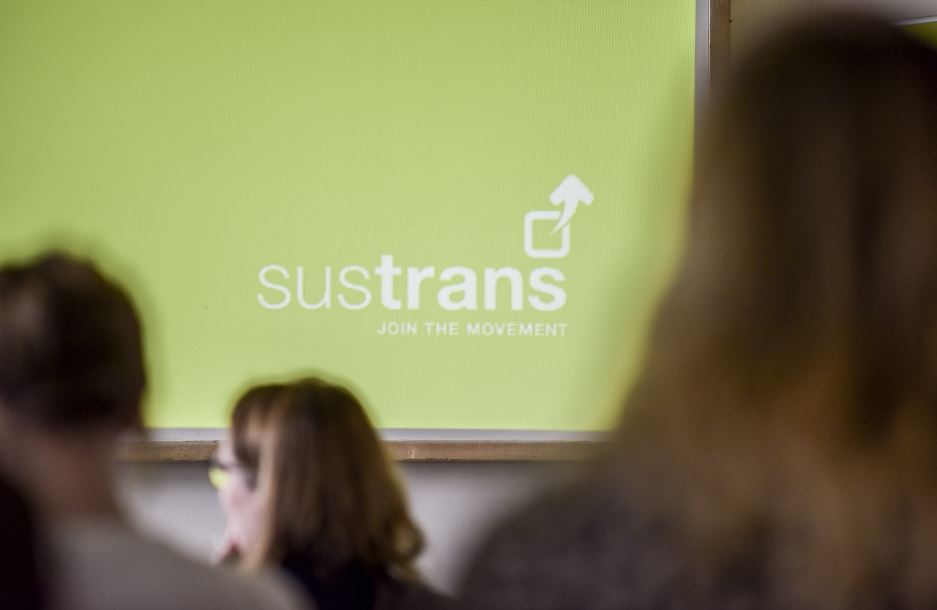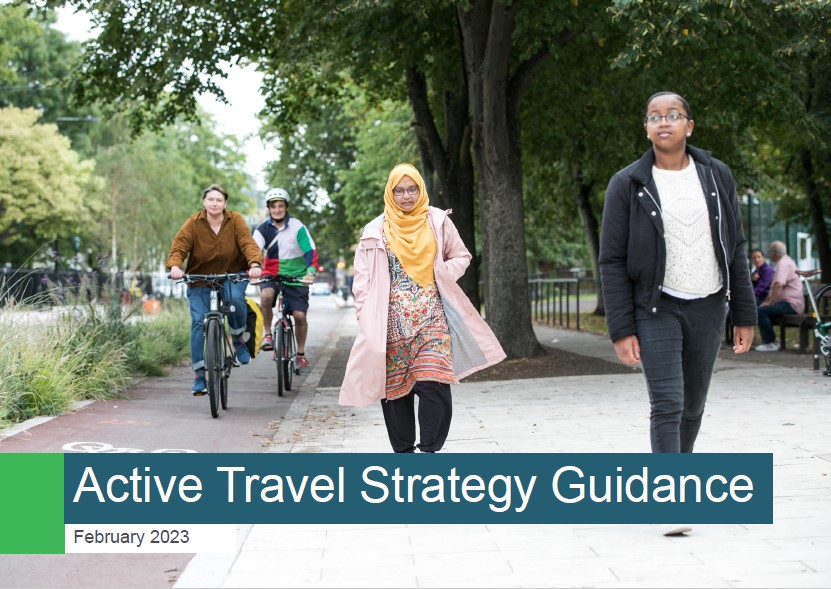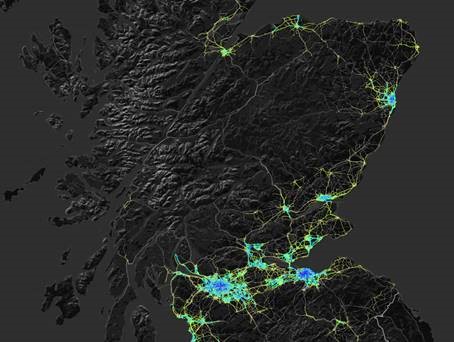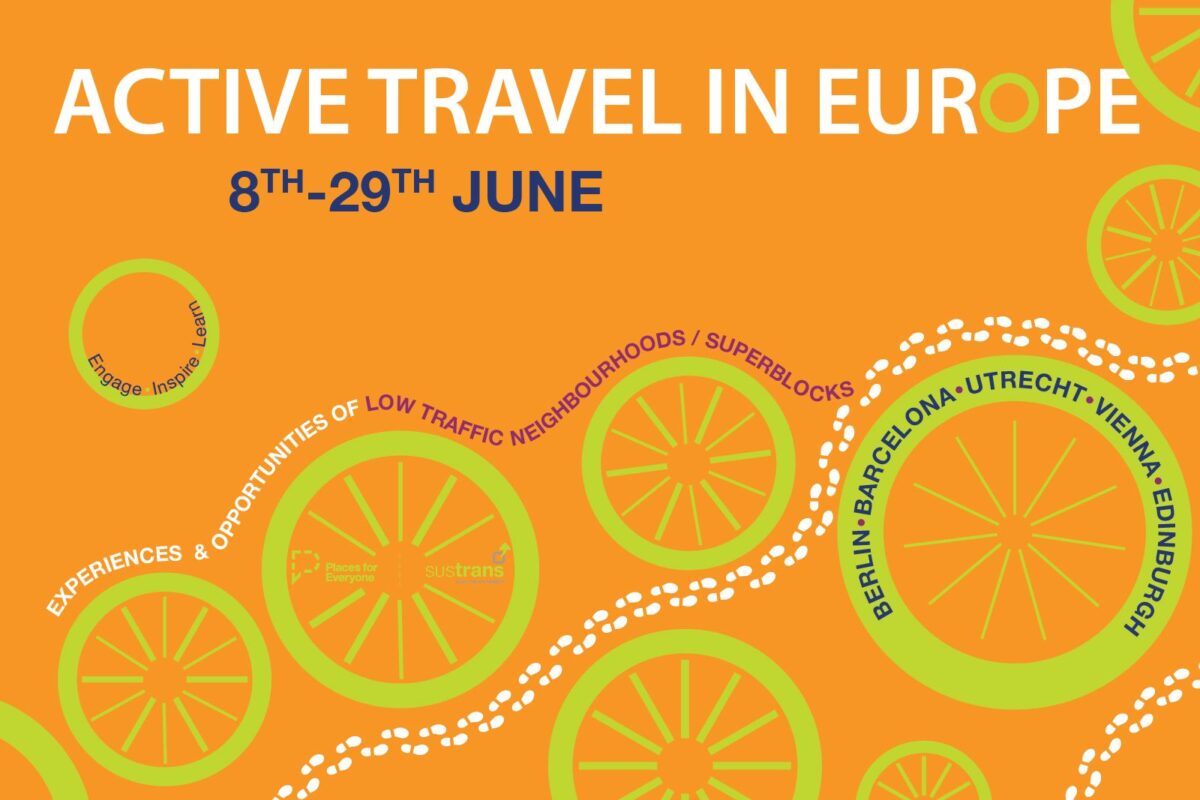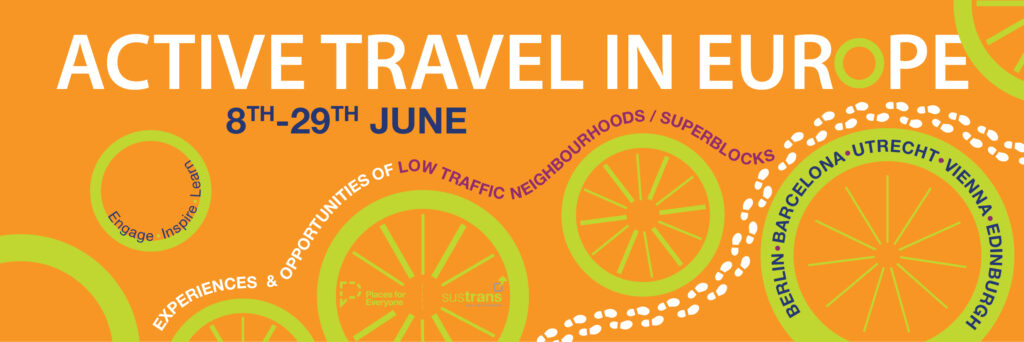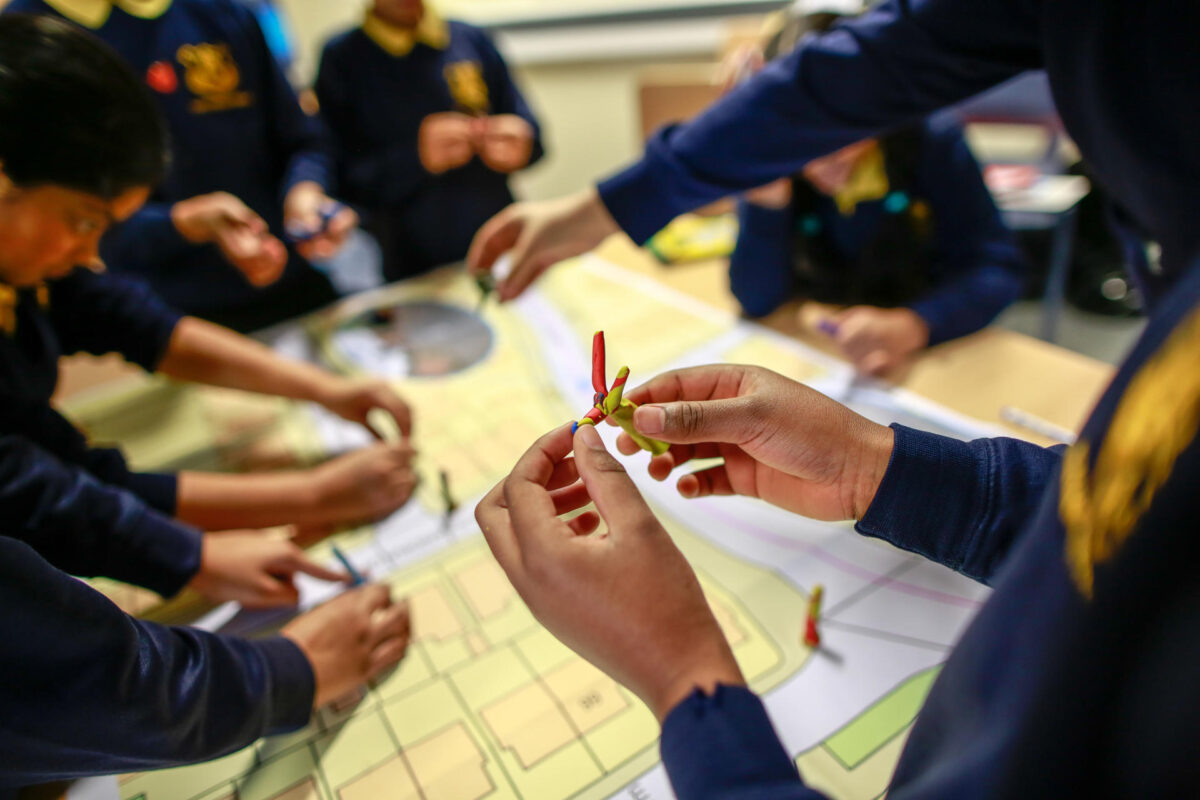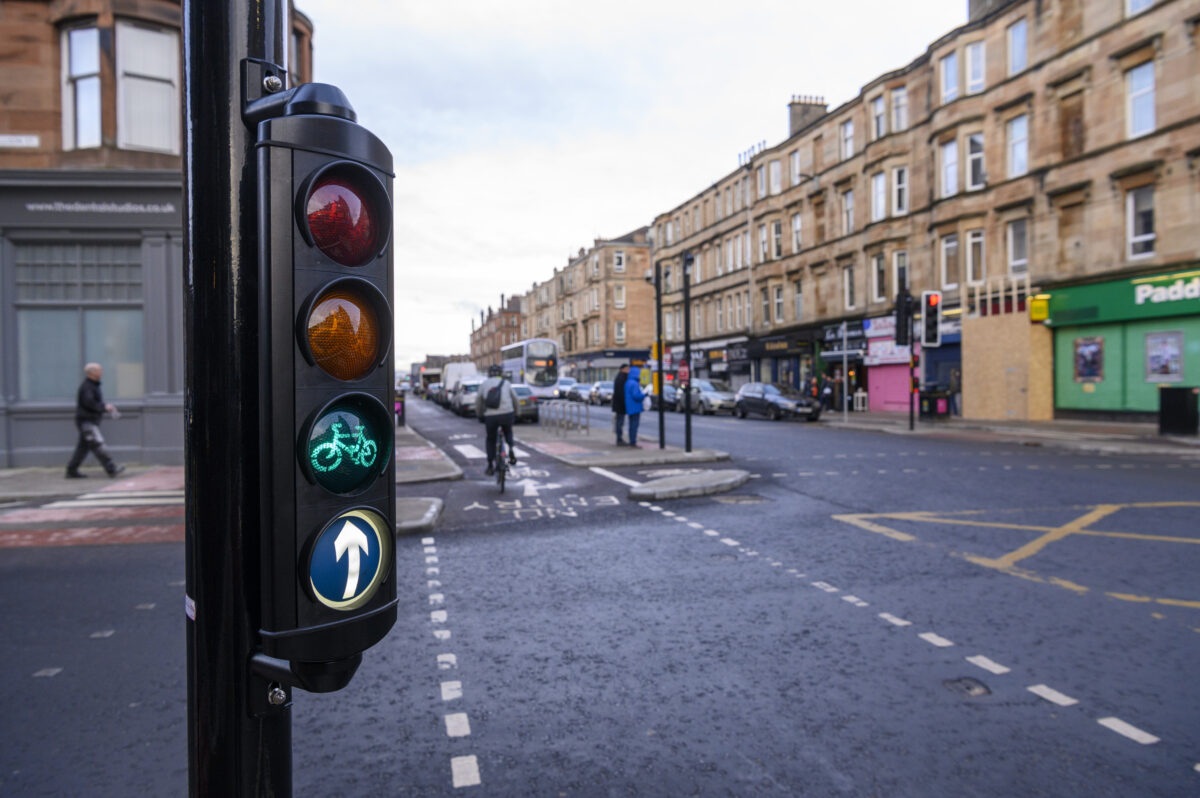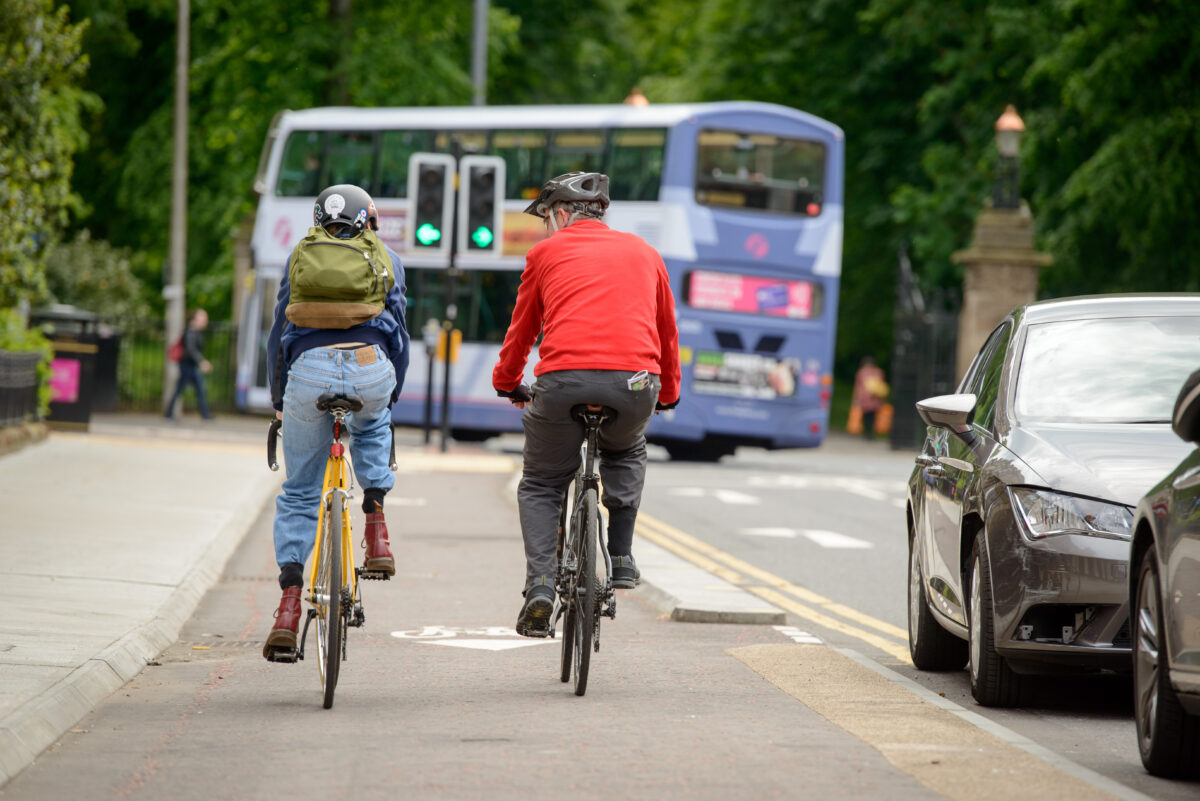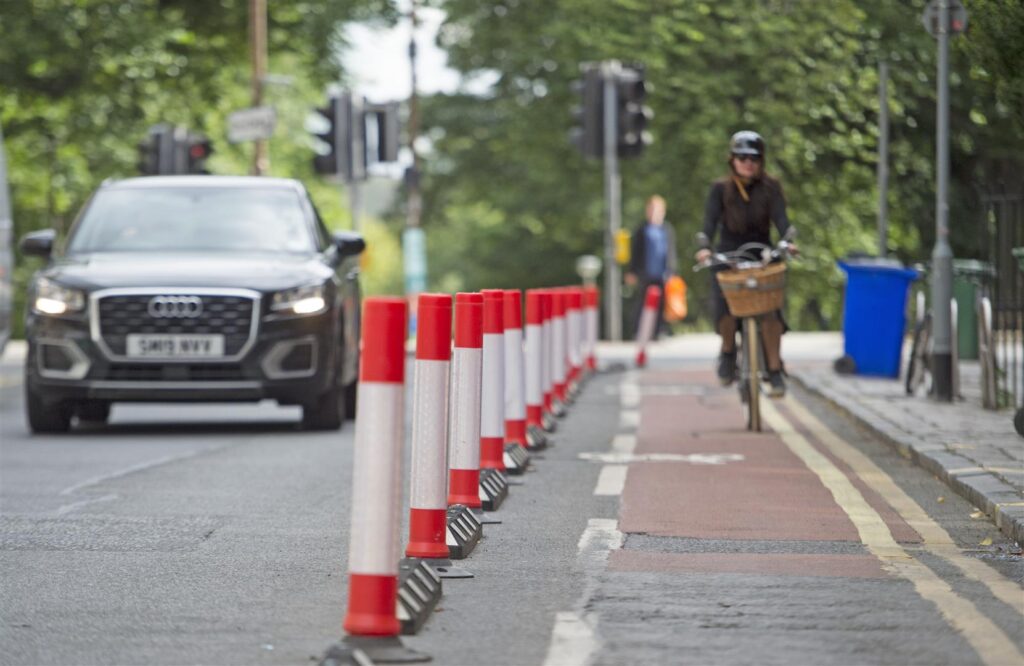Overview
We invited Places for Everyone partners to join us for this webinar, as part of the Places for Everyone training and events programme – Engage · Inspire · Learn.
The session introduced the Sustainable Travel to Stations Strategy (STSS) – Scotland’s Railway’s strategic plan to help make it easy, convenient, and safe for most passengers to get to and from railway stations without a car.
The vision of the STSS is to grow the number of journeys passengers make to, and from, local neighbourhoods to the railway station by healthy and sustainable modes of transport: walking, wheeling, cycling, on-demand transport, and the bus.
The need for close collaboration and co-creation between all stakeholders to integrate stations is pressing. This strategy sets out to propose a tighter alignment between planning and delivery at all levels.
Presented by John Lauder, Deputy CEO Sustrans on secondment to Scotland’s Railway, who is leading on the strategy, the webinar covered why the strategy has been developed, how it is being delivered and what that means for you.
Webinar recording
Presentation slides
You can download a copy of the presentation here.
Questions & Answers
Q: If I was to draw a 5km radius ‘as the crow flies’ around a railway station, a bike journey would likely take longer than that 5km journey. Do you have an idea of how much longer you would expect for that journey to be done by bicycle?
The 5km outlined is based on the active travel framework and the target utility cycle journey in Scotland is 4km, so we’ve extended that to 5km. But it’s a rule of thumb that I would expect local authority officers to adapt based on topography, density of housing, and other factors. By and large, that’s the approach we want to see upheld.
It’s all about context and that’s where the Local Authority, RTP and Rail need to work together. Let’s start thinking about how stations work for the wider community – let’s go beyond thinking about the immediate car park.
Q: What are the suite of pilot projects, and how have they been selected?
We don’t have a fixed suite of pilot projects yet. We are currently talking with a couple of local authorities and want to get those up and running as practical pilots. Now we also have projects which are very close to the point where they could go for funding applications. So we currently have projects in delivery, in development and in discussion.
If you have a project that you are enthused about, we would like to hear from you. When my secondment ends, a new email address will become available to send your ideas about station integration to, and this will go directly to the Strategy and Investment team. A Practitioners guide will also be released in the next few weeks.
Q: Does the strategy consider accessibility? For example, how do things like access to benches and toilets, that are necessary for some people to make that journey, fit into the strategy?
Our accessibility strategy which is coming out shortly, will cover that exactly – for example seats, signage, toilets, noise colours, surfaces, step-free access. The challenge is that a lot of stations are old and can be difficult to access. So there’s a lot to be done here. Part of the challenge will be prioritisation. The accessibility strategy will say that we need to up our game and improve our stations.
Q: What do you know about the people who travel by train and don’t fill out the survey? It seems Rail doesn’t know its passengers well enough.
There is a lot of work needed because Rail don’t know enough about how people use their services. This survey is basic, empirical data and we need much more informed data. The Passenger Experience team in Scotrail are beginning to do some work around profiling, and understanding the needs of their users better, but there is a lot of work to be done to get more meaningful conversations with passengers.
Q: How do you envisage the 5km “zone” being applied in a rural context, for example Aviemore or Pitlochry?
I would like to think that we can do more to have better services to stations by either bus or community owned transport where distances are big. So for example, Stonehaven station, the radius here for the travel to station distance is 40km. What can we do there to give people an option not to use their car?
To answer the question about Aviemore and Pitlochry, I would like to see better facilities for walking and cycling, better cycle storage, a better accommodation of electric bikes that type of thing there. The strategy is quite clear that there will be an element of parking requirement in rural areas. But there’s an issue there, about how rural areas currently provide some form of public transport or not, and how that can be tackled over the next few years.
Q: Will Scotland’s Railway work with Network Rail if there is a network rail bridge in the 5km radius which is a serious barrier to those cycling and wheeling (due to steps)?
I would very much hope that with the endorsement behind this strategy, the property team and also the asset protection team (who look at every proposal in and around the real estate and how will it impact on the safety of the estate) will look positively on this type of application. A barrier like this, making it difficult to get to the station, might just discourage people from taking the train. So this definitely needs to be tackled, and again, it’s why we’re saying we want Rail to think about 5km from the front door and we want local authorities to think about the station 5km from a development.
Q: Beyond the pilot projects, will there be yearly funding available for local authorities to apply for access to stations?
My understanding is that Transport Scotland will encourage projects being submitted to them that are transport integration projects, particularly station integration projects. I don’t think there’ll be a dedicated fund created. I think the expectation that this is a theme that will grow and develop over the next few years and we’ll see more applications coming in.
Q: For many people in a rural environment, it will be a 3-5km journey to the station and also on the other end. Can you say anything about the lack of capacity of bike storage on trains?
The positive is that ScotRail are currently consulting on a whole new fleet of trains and this decarbonisation programme is leading to a complete refresh of the entire rolling stock. So there’s an opportunity to see an emphasis given to much greater provision of cycle carriage that will be part of the tender that’s released.
Speaking from experience, my concern is the ability of Rail to be able to cope with demand because I think demand’s going to grow and grow to have carriage of cycles and trains.
So that also questions the availability of good cycle parking, but also the availability of cycle hire at the other end as well. But this consultation on a new fleet gives us an opportunity for better provision for those using wheelchairs and mobility aids and those with a lot of luggage.
Q: Is there anything we can do in terms of phasing new stations,or improvements of stations, and integrating them around new developments?
There has to be much better provision, right from the start, that you can walk and cycle and get a bus in and out of the station. And it’s why I’ve highlighted the need for housing developers to begin thinking about how the housing development is designed around the station, so that it’s easy to get to the station from the get go. If we were following the infrastructure first planning principle, we would have the paths to the station long before housing is built. And that’s really what is needed.
Q: The West Coast trainline has dedicated bike carriages, which is great to see. Are there proposals to have similar facilities on wider networks or routes to make it more user friendly to get more cycles and wheeled vehicles onto trains?
I’m not aware of it, but as I said, the whole rolling stock for passenger services is to be refreshed, and it’s an opportunity to influence the decisions that are taken by ScotRail and the purchase of those trains. I would encourage you to participate in that wider consultation when it’s launched later on this year.
Q: John, do you have any key takeaways you’d like to share with the audience today?
This is a brilliant opportunity to think about the stations in your area and how easy they are to get to on foot by bike, wheeling and by bus. And it’s a golden opportunity to go to Rail and say we really want to improve this – how about it?
Because this strategy has been endorsed at the highest level, and we know more funding is becoming available for active travel, this is a great time to come up with a proposal to do something we’ve all wanted to do for a long time.
